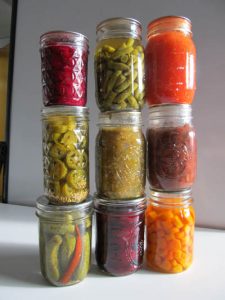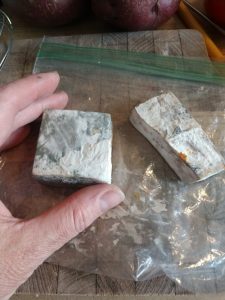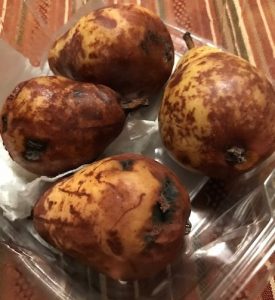 Greetings, Conscientious Food Consumers!
Greetings, Conscientious Food Consumers!
With the colors of fall brightening our dwindling hours of daylight, the harvest scramble is underway, along with a new season of eating.
Colorful outdoor displays of pumpkins, varieties of apples, corn and squashes of every shape announce the season at the grocery stores and the farmers’ markets. Neighbors are sharing/offloading zucchini and other overflow garden items.
Following the autumnal equinox, the race is on to get it all prepped and into our fall menus, our freezers, fridges and pantries. Speaking of menus — check out our “Budget Bites” page featuring delicious ideas for meal planning on a budget from NFLB/Sustainability Coalition partner, First Alternative Co-op. We love the Co-op’s recipe blog! Even more inspiration for eating seasonally is available with recipes from the Food Action Team of the Sustainability Coalition.
This year, along with COVID-19, interest is surging in old-fashioned food preservation practices like pickling, freezing, dehydrating and canning. If you’ve shopped at Bi-Mart lately, you may have noticed posters in the aisles with food preservation safety tips for everything from making jelly to jerky, courtesy of OSU Extension Service’s Home Food Safety and Preservation Program.
In the following sections, we will also make use of that expertise to help you make the most of your autumn abundance. You can also get your questions answered by a Master Food Preserver volunteer by calling the toll-free hotline at 800-354-7319 from 9 am to 4 pm, Monday-Friday, through October 9th.
DRY OR DEHYDRATE IT
Skip the snack aisle at the grocery store and bake your own crispy, healthy chips from apples, beets, kale, sweet potatoes and even sliced zukes! It’s not hard to find recipes online, but “Downshiftology” has a million fans (literally) for good reason.
For longer-term preservation of a variety of fruits and veggies using your oven or a food dehydrator, check out this how-to booklet.\
TIP: Use extra caution regarding food safety by following the pre-treatment instructions for destroying bacteria on food items prior to drying.
Beyond trail mix — how to use and enjoy fruits and veggies after drying.
FREEZE IT
– First prep, blanch, and package your future winter meal ingredients, just as for summer fruits and veggies (see our “summertime chillin'” blog).
– Use our Smart Strategies: Storage guide for Freezing Fruits and Vegetables for specific treatments.
– Download the FoodKeeper Food Safety app from the link on our website. It’s a mini-reference guide from the USDA on safe food storage and freshness guidelines for hundreds of food items.
– Don’t forget to make notes on your Freezer Inventory List!
PICKLE IT
For no ‘cukes left behind — nor mushrooms, peppers, corn onions, beans, beets, cabbage, zucchini or what have you! (Can you recite that old tongue-twister about Peter Piper and the pickled peppers?)
Pickling — using vinegar or fermentation — is one of the oldest methods of food preservation. The process has been improved through research and the evolution of food science during the last century, and now there are also resources for those with low-salt or other special dietary requirements. For the safest results, the experts at OSU Extension Service recommend using “up to date recipes from reliable sources.”
No offense to your great-aunt and her recipe!
CAN IT
Whether you’re experienced or a novice, OSU Extension Service has the detailed information you need for successful pressure cooking and/or canning, including checklists for steam- versus pressure-canning methods. It also lists publications on how to care for your home canning equipment.
Veteran canners will also appreciate the new Canning Timer and Checklist App!
In this week’s Kitchen Confessions:
Jeanette Confesses:
These two remnants of artisan cheese were bagged and buried in the meat/cheese drawer of our fridge. By the time we discovered them, they were definitely over-aged!
$$ WASTED: $3-4
LESSON LEARNED: Place on “Eat First” shelf next time.

Karen Confesses:
These pears from a neighbor’s no-spray tree were almost ripe when they were given to me, so they wouldn’t end up rotting on the ground! I put them in a clear plastic clamshell in the upper area of my refrigerator compartment, since my “Eat First” area was already crowded. They degenerated into this state while I was temporarily absent from home during the worst of the wildfire smoke.
$$ WASTED: None (gift); Cost: guilty conscience
LESSON LEARNED: Prepare and eat them right away! Make note of/rotate items in my “Eat First” area.
Wildfires Update: A month ahead of Thanksgiving, we are immensely grateful for the return of breathable air and for the heroic efforts of those working to contain the massive wildfires here in Oregon.


